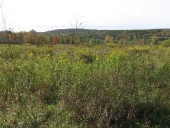








Brenda
Bloom where you are planted.
http://restfultrailsfoodforestgarden.blogspot.com/










land and liberty at s.w.o.m.p.
www. swompenglish.wordpress.com




find religion! church
kiva! hyvä! iloinen! pikkumaatila
get stung! beehives
be hospitable! host-a-hive
be antisocial! facespace








suez wrote:
Thanks for all the info and ideas.
Yes, we've though off grazing them until they die down, but with a little more research it looks like the bark is poisonous to animals. There's a bit of a discrepancy there, as some sites say it is used as fodder and others advise not to use it as it can cause your animals to die.......... don't know if I'm willing to take the chance.
Plus they grow at the bottom of the farm where there is a bit of human traffic and I'm not willing to let my goats become meat for a happy bypasser (is that the right word??) as it often happens here.
I've seen people advising to plant it as the wood is very useful. That it definitely is......... but oh boy, when it takes over............. maybe in other climates it won't grow as aggressive as it is here. They've invaded almost 2 hectares of our property in the last two years.
We're currently taking out the roots with a backhoe and planting radishes for the cattle in the area so we can work the soil again if needed. Weeding by hand only hurt the hands - nothing else. Will let you know if the backhoe is working.
And it does wonders for the soil. Most beautiful soil builder. I'm using the soil for my raised beds.
In the mean time the bees are indeed enjoying the flowers and we've created a whole windbreak with the smaller sticks we've taken out. Maybe I should post a photo.
Regards,
Suzie
For those of you who don't like these trees, about the only way I've seen to get rid of them is to get goats. I thought these trees were invincible until I penned in some goats around them. Black Locust is one of their favorite foods. They eat the smaller branches, thorns and all. And they will bark the smaller trees. However, once the goats are removed, the new sprouts will be free to grow unhindered again.




Brenda
Bloom where you are planted.
http://restfultrailsfoodforestgarden.blogspot.com/




suez wrote:
Yes, we've though off grazing them until they die down, but with a little more research it looks like the bark is poisonous to animals. There's a bit of a discrepancy there, as some sites say it is used as fodder and others advise not to use it as it can cause your animals to die..........








http://www.greenshireecofarms.com
Zone 5a in Central Ontario, Canada








"the qualities of these bacteria, like the heat of the sun, electricity, or the qualities of metals, are part of the storehouse of knowledge of all men. They are manifestations of the laws of nature, free to all men and reserved exclusively to none." SCOTUS, Funk Bros. Seed Co. v. Kale Inoculant Co.








If you get too far from the stone age .. things go haywire.










paul wheaton wrote:
This is the first time I have ever heard of anything doing poorly around a black locust. All of my previous information says that black locust is a great team player: feeding the other plants around it.
Paul Cereghino- Ecosystem Guild
Maritime Temperate Coniferous Rainforest - Mild Wet Winter, Dry Summer




The Earth Garden
Gardening and environmental forum
The Natural Order
Environment, permaculture, and related videos

|
We find this kind of rampant individuality very disturbing. But not this tiny ad:
Support permies and give beautiful gifts to gardeners: permaculture playing cards.
https://gardener-gift.com/
|




